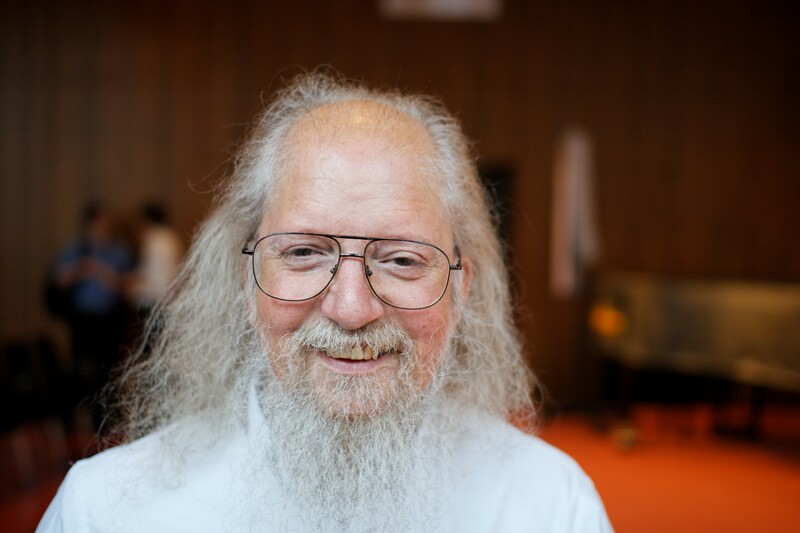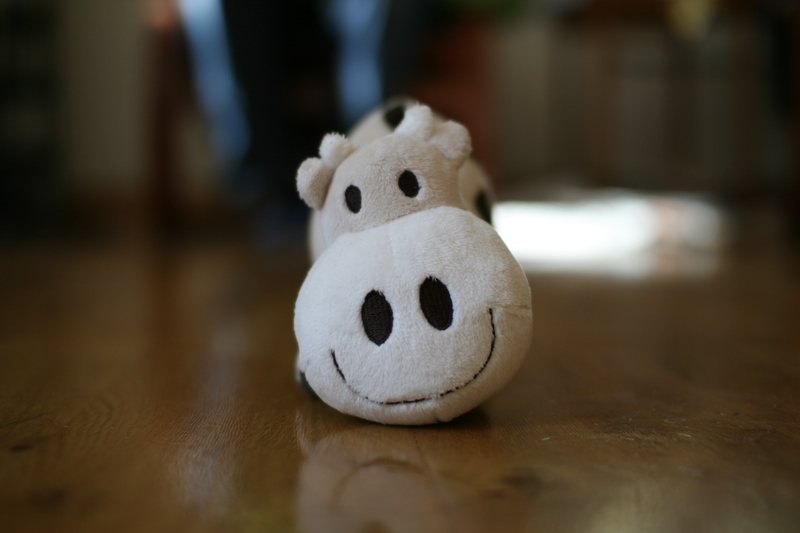Sigma 30mm F1.4 EX DC HSM

The lens |
I didn't know much about lenses, having only ever used the one I bought with the camera. I was fairly pleased with it, but discovered that taking photos of our newborn daughter (indoors, necessarily) gave disappointing results. The problem was the same one that made me give up my compact camera: not enough light. I could use high ISO, and get grainy photos, or low ISO, and get blurry ones.
I'd heard about "prime lenses", mainly the 50mm ones, which were supposed to be great somehow, despite not being able to zoom, and which had lower F-numbers. My zoom goes to F2.8 at the wide end, while these could go as low as F1.8 or even F1.4. I knew lower F-numbers meant more light (and less depth-of-field), but how much more? I set my camera to Av-mode, dialed in F5.6, and recorded the exposure time. Then I reduced the F to 2.8 (exactly half), getting a quarter of the original exposure time. I did some more tests, getting consistent results: exposure times decreased with the square of the F-number change.
I then took out a photo primer and looked up the meaning of the F-number again: focal length of lens divided by the width of the lens opening (aperture). So obviously, doubling the aperture width would give half the F-number, and four times (22) the area of opening in the lens (twice the height times twice the width), and hence four times the light. I'd typically gotten 1/10th of a second exposure times with ISO 100 and F2.8. That's too little, but with an F1.4 prime I should get 1/40th at ISO 100, which is enough. (I could also get 1/40th with ISO 400 and F2.8, but that doesn't look as good.)
I tested 30mm and 50mm focal lengths with my zoom, and quickly came to the conclusion that 50mm gave a too narrow field of view for most uses. Yet everyone seemed to be going on about the 50mm primes. These were supposed to be classical, somehow, and to match the perspective of the eye. The 30mm seemed much more versatile to me, however, with its wider field of view. So what to do?
Today I know that sensor size matters here. The most common size for low-end DSLRs is called APS-C, which is a crop factor of 1.6, meaning height and width are both divided by 1.6 compared with 35mm film (or what's called full-format sensors, which are the same size as 35mm film). With a cropped sensor you only see the middle part of the image, compared to a full-format sensor. So you get a narrower field of view.

Patrick Durusau (as seen by the 30mm) |
The people talking about the perspective given by a 50mm lens were referring to how it looks on film (and full-format sensors). On a 1.6 crop factor camera like mine that becomes 50 * 1.6 = 80mm. A 50mm lens on an APS-C camera is in other words equivalent to an 80mm lens on a full-format camera. 30mm, on the other hand, becomes 30 * 1.6 = 48mm, which is about the same as 50mm on a full-format. So 30mm was the right format for me, after all. I didn't know this at the time, but simply decided that if I was spending this much money on a lens, I'd get one that I would be using as much as possible, whatever the experts said.
In the end, I chose the Sigma 30mm F1.4 EX DC. It's not cheap, but seemed the best choice. I've now had it for about 9 months, and just love it. It gives visibly better image quality than my Sigma 17-70mm zoom. It renders colour and contrast better than the zoom, especially warmer colours and above all people. For taking photos of people indoors this lens is just about perfect (at least for non-pros). The wide aperture gives enough light, and 30mm is the right focal length for up-close portraits of the person in context (ie: more than just the face). And by moving around you can kind of zoom with your feet.
With F1.4 also comes reduced depth-of-field, meaning that you can blur out everything except what you focus on, making the viewer focus on what the photo is about. At F1.4 this is taken to such extremes that you can in many cases remove the background entirely. And the bokeh of the 30mm is great, dissolving out-of-focus parts into a creamy, buttery wash.

Toy cow (and buttery wash) |
This, however, has a clear downside. Closeup photos of the baby at F1.4 will typically have the eyes in focus, and the forehead and tip of the nose out of focus. This can lend a nice, dreamy quality to the image, but it can also be too soft. And if you're shooting a group of people at a table, for example, F1.4 will give you enough light, but you'll have to choose who to have in focus and who to blur. Further, moving the camera or the subject even very slightly after focusing causes a blurry shot. This happens very easily, so I usually take three shots to be on the safe side, then delete two.
Overall I'm very, very happy with the lens. It has some barrel distortion, but DxO fixes that for me. It also has some purple fringing, but very rarely enough for me to really mind. It doesn't focus any closer than 40cm, which is a bit far for some uses, but I usually don't need this lens for those shots, anyway. The great win is the speed (low aperture) and the image quality.

Nøgne Ø IPA |
I wish I had more shots to show, but unfortunately this is my "friends and family" lens, and so most of the really good photos are not for public display. Sorry about that.
Similar posts
New camera
On Tuesday I went to the local camera store and came out with a Canon EOS 400D, sold in the US under the idiotic name of Canon Digital Rebel XTi
Read | 2008-01-25 20:36
To DSLR or not DSLR
I started my digital photograpy career with a crappy Olympus camera I got for Christmas from my father
Read | 2008-01-20 00:31
Polarization filter
After buying my DSLR camera I've developed symptoms of beginning camera-geekiness, and have on and off looked at all kinds of camera-related equipment, without actually buying anything
Read | 2008-07-27 11:05
Comments
Oto Araba - 2009-08-07 09:50:28
It is the best lens i own and i would never part with it. Only trouble is that it has some frontfocusing issues since i upgraded D90. I will send the lens together with the cam to sigma as soon as im back from holiday. congrats to your lens man
Mike - 2009-11-14 03:03:51
I've had this lens for my D40 for a couple of years and I'm quite happy with it. One thing that people ordering it without handling it in a shop might not realize is that it's quite big and heavy. It makes for a very front-heavy combination with the small plastic D40 body. This is not a problem for me, but I was a little surprised, since I was used to manually focused prime lenses for film cameras, and they used to be generally lighter than zooms.
The other thing is that in this case, contrary to what some might expect, the image quality of a prime is no better than that of a zoom, probably because f/1.4 max aperture construction done at a relatively ow price. E.g. the D40 kit zoom (very cheap and plasticky, but optically quite good Nikon 18-55 mm) is sharper than this lens and has less color distortions. It doesn't matter in practice, because this lens would be primarily for photographing people and using the shallow depth-of-field effect, not for some technical photography or such.